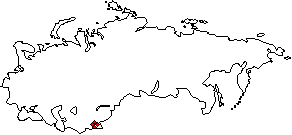CONTENTS
IntroductionForeword
Language Groups
Tribes and Dialects
Order the book
The Peoples
of the Red Book
Abazians (Abaza)Abkhaz
Aguls
Akhvakhs
Aleuts
Altaics
Aliutors
Andis
Archis
Asiatic Eskimos
Bagulals
Baraba Tatars
Bartangs
Bats
Bezhtas
Botlikhs
Budukhs
Central Asian Jews
Chamalals
Chukchis
Chulym Tatars
Crimean Jews
Crimean Tatars
Didos
Dolgans
Enets
Evens
Evenks
Georgian Jews
Godoberis
Hinukhs
Hunzibs
Ingrians
Ishkashmis
Itelmens
Izhorians
Kamas
Karaims
Karatas
Karelians
Kereks
Kets
Khakass
Khants
Khinalugs
Khufis
Khvarshis
Kola Lapps
Koryaks
Kryz
Kurds
Lithuanian Tatars
Livonians
Mansis
Mountain Jews
Nanais
Negidals
Nenets
Nganasans
Nivkhs
Nogays
Orochis
Oroks
Oroshoris
Peoples of the Pamirs
Roshanis
Rutuls
Selkups
Shors
Shughnis
Tabasarans
Talysh
Tats (Tatians)
Tindis
Tofalars
Trukhmens (Turkhmens)
Tsakhurs
Udeghes
Udis
Ulchis
Veps
Votes
Wakhs
Yaghnabis
Yazgulamis
Yukaghirs

THE ISHKASHMIS
Habitat. The majority of the Ishkashmis live in the Pamirs on the upper reaches of the River Pyandzh, and on the left bank of the same river, in the Province of Badakhshan, in North Afghanistan (their number varies from 1,500 to 2,000, according to the data consulted). There is only one Ishkashmi village (qishlaq) on the territory of the former Soviet Union, which is Ryn in the Ishkashmi District of the Gorno-Badakhshan Autonomous Region of Tadzhikistan (the biggest village -- Nyut, marked as Ishkashim on the maps). The village is situated on the right bank of the River Pyandzh where it turns sharply from the west to the north. Due to a forced resettlement in the 1950s, some families live in Tadzhik villages (Nyut, Sumdzhin, Mulvodz and others), and in a Wakh village, Namatgut.
The information about native speakers has been collected through on-site linguistic study. The place-names indicate that in many locations where the Tadzhik language is used at present, in former times Ishkashmi was spoken. According to the oral records of the Ishkashmi, the valley of Abharvdara (the right bank of the Pyandzh) was once predominantly Ishkashmi. The Ishkashmis also lived in the valley of Dara-i-Abharv, from where they were driven out by the Shughni of Shahdar.
Population. Ishkashmis number about 400 in Ryn and the total number in the Gorno-Badakhshan Autonomous Region is around 500.
Language. The Ishkashmi language belongs to the Pamir southern group of the Iranian group of the Indo-European family of languages. Different dialects have been recorded: Ishkashmi proper, Zebak and Sanglechi. The latter two are spoken in Afghanistan. The Tadzhik influence on the speakers of Ishkashmi proper is very strong. Ishkashmi is still commonly used as a language for everyday communication. Schools, official communications, publications and broadcasting programmes are in Tadzhik. All the Ishkashmis, except young children, speak Tadzhik, and it is also used in communicating with the neighbouring Wakhis and Shughnis. According to T. Pakhalina. Ishkashmi is surviving, although its sphere of use is narrowing.
The first data on the Ishkashmi language was published by R. Shaw in his well-known work "On the Ghalchah Languages (Wakhi and Sarikoli)" (Journal of the Asiatic Society, vol. XIV, 1876). A systematic research of the language is relatively recent (1920s).
Writing. Like the other small nations in the Pamirs, the Ishkashmi have no written language, and for this purpose Tadzhik is used. There has been little research on the Ishkashmi language. The material by R. Shaw has been collected in the area of the Sanglichi dialect. For a long time this was the only information which European philologists had at their disposal. In 1914 R. Gauthiot happened to write down some Ishkashmi words heard from a chance passer-by. After the death of the linguist these were published. The first text in Ishkashmi was published only in 1920.
REFERENCES
- Т. Н. Пахалина, Ишкашимский язык, Москва 1959
- Т. Н. Пахалина, Памирские языки, Москва 1969
LV